- Home
- Research Interests Apri sottomenù
- Publications
- People
-
Projects
Apri sottomenù
- Progetto PNC - Fit4MedRob - Interfacce Neurorobotiche Ibride per il Controllo e il Recupero della Funzionalità Motoria e Verbale (NeuroRobCoRe)
- Progetto PNC - Fit4MedRob - Sistema innovativo per l'Analisi del Movimento e il Monitoraggio in Tempo Reale del Tremore (SMART-tremor)
- PRIN2022 - MulWalk
- Partenariato Esteso, funded by PNRR - Mnesys
- MSCA Staff Exchanges - PLACES
- PRIN 2020
- FETPROACT-2019 MAIA
- HumaneAINet
- Ricerca Finalizzata 2019 - GR-2019-12369242
- PRIN2017 - PACE
- H2020-MSCA-RISE-2016 - Platypus
- Agenda
People

Prof. Patrizia Fattori
Principal Investigator and Full Professor
I have always been fascinated by the power of our brain. I admire its complexity and its perfection in physiological conditions. Starting with my PhD, as a Neuroscientist I started studying the visual cortex, and then ended up with studying the circuits linking vision to eye and hand control.
Now I am interested in exploring the functions of our brain also for using its potentiality for implementing better performing AI systems. Indeed I study the sensorimotor transformations that our brain quickly and efficiently performs in ways still to be discovered. On the other side, AI is still low performing in the field of guiding movement in dynamic contexts. I think that my research can be useful in the foundational aspects of AI in this important aspect of motor control.
Favourite scientific discovery: We all know that a visual receptive field of a neuron is the part of the retina from which the neuron sees the world; its retinal window. Well, this is not completely true. In the posterior parietal cortex, in a part of the cortex at the interface between visual perception and arm action control, we found visual cells of a peculiar type. These cells, called “real-position” cells, have a visual receptive fields that is stable in space despite eye movements. These neurons seem to represent a kind of window on the retina that opens and closes taking into account where we are directing our eyes. This is unusual for visual neurons and contributes to our perception of space.

Prof. Claudio Galletti
Professor Emeritus
My life was devoted to the study of how the brain encodes the visual world, and how it uses visual information to control visually-guided prehension. The study was mainly performed on macaque monkeys, but since my goal was to understand the human brain, I’ve recently started to study it with fMRI.
I discovered the existence of two new areas in the caudal part of the macaque superior parietal lobule (SPL): area V6 and area V6A. Area V6 is a pure visual area encoding direction and recognition of object motion. Area V6A, bordering V6, is a visuomotor area involved in the control of reach-to-grasp actions. I’ve recently found that areas V6 and V6A are also present in the human brain, with approximately the same functional properties as in macaque. In both human and macaque, area V6 is part of Brodmann’s area 19 and V6A of Brodmann’s area 7. Recently, I’ve suggested that macaque and human SPL have similar structural and functional organization, contrary to what believed by most labs in the world. Thanks to the huge amount of data collected till now on monkey SPL, this similarity will help in understanding the human SPL function(s).

Prof. Rossella Breveglieri
Associate Professor
My research interests are addressed at studying the role and the functions of the different areas parietal cortex. In particular, I am interested in the contribution of the parietal areas in reaching and grasping. After having recorded single-cells discharges from the parietal cortex for many years, and having contributed to the neural correlates of the visuomotor behavior, I am translating the knowledge about the functions that I contributed to study to the human brain using transcranial magnetic stimulation, a fascinating technique that brings you to see the brain functions first-hand
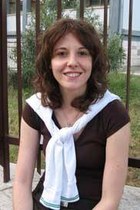
Prof. Annalisa Bosco, PhD
Associate Professor
My research interests are addressed at studying how the brain controls the visuomotor responses. I study these topics at two different levels: a high-order level consisting in acquisition of neural data from cerebral cortex and an execution level consisting in acquisition of behavioural data. For me, the way we perceive and interact with the world always represented interesting field to discover and investigate from different perspectives.
At neural level, I contributed to the study of functional properties of cortical area V6A located in the superior parietal lobule of the macaque. In particular, I focused my studies on the role of visual information in the encoding of reaching and grasping movements and which types of coordinate systems are used to plan and execute these movements. At behavioural level, I contributed to the understanding of the interaction between perception and action in both the oculomotor and skeletomotor system and at the study of mechanisms underlying the control of reaching movements towards the 3D-space.
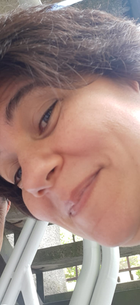
Michela Gamberini, PhD
Associate Professor
After the degree in Biological Sciences I was attracted by the research activity in life science and I started in Vision science during my PhD program. I was first engaged in electrophysiological experiments in non-human primates, and I'm now involved in neuroanatomy of primate brain, from the histological observation to the neurosurgery.
My research activity concerns in particular the recognition of cortical circuits and the anatomical organization of the primate cortex. I consider my relevant "scientific discovery" the cytoarchitectonic subdivision of the parieto-occipital cortex of the non-human primate brain. I love observing histological tissue under the microscope and I have the patience and the perseverance to see little differences in the cortical pattern.
I'm very interested to support to the view that human and non-human primates have similar cortical organization because these similarities can help in understanding the human brain and the advancement of knowledge can improve rehabilitation procedures and ameliorate the neural control of prosthesis for the human health.

Konstantinos Chatzidimitrakis, PhD
Senior Assistant Professor
My scientific interests are centered on how the brain controls skilled actions – in particular, how we perceive the locations of different objects in the world around us, and how we coordinate actions towards them. My most significant research results address how the third dimension of space (depth, or distance from one’s body) is represented in the electrophysiological activity of neurons. I am interested in how this information is processed across areas of visual, somatic sensory and association cortices to guide hand movements. This has been a neglected topic in Neuroscience which however has marked clinical relevance, since studies in human patients with parietal lesions suggest that the amplitude and direction of arm movements are controlled by different neural systems. My aim is to contribute to the development of future generations of brain-machine interfaces (BMI), which will allow people with spinal cord injury, amyotrophic lateral sclerosis, or amputation to use brain signals to voluntarily control a prosthetic device that will enable them to interact with the world.

Marina De Vitis, PhD
Junior Assistant Professor
As my first mentor, my dad taught the ultimate life lesson: there’s nothing on this Earth one cannot learn. He first introduced me to the magic world of the human body and I never stopped being attracted by its complexity and functioning. Science is a wonderful field, where one could see beneath the surface of things, and ask why, why, why, why? And the results of one’s thoughts could actually be tested by experiments and reveal completely unexpected yet real phenomena.
After obtaining my MSc in Chemistry and Pharmaceutical Technologies at University of Bologna, I set my first steps on Neuroscience ground as a PhD candidate. During my PhD research work, I developed a strong interest in general Neuroscience and gained insights into the functional properties of the parietal-occipital cortex and the cortical mechanisms of visuo-motor integration. More recently, I started studying how the brain exerts attentional control and how attention interacts dynamically with the environment using a combination of fMRI, electrophysiology, and state-of-the-art reversible perturbation methods.
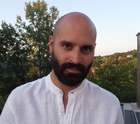
Matteo Filippini, PhD
Junior Assistant Professor
I have always been attracted from complex systems and how they work. Brain is the most complex machine existing on the earth. In the past few decades, impressive progresses in brain recording techniques and ever-increasing computer computational power are bringing us closer and closer to understand how this extraordinary machine works. I can’t miss to be here!
Recently I collaborated to shed some light on the functional roles of V6A, an area of posterior parietal cortex. This area is part of a network that integrate incoming vision, tactile and proprioceptive information to elaborate plan of actions. This information could possibly be extracted, decoded and used to drive neural prosthesis in order to restore basic mobility of patients with impaired mobility. V6A elaborates reaching trajectories and hand shapes necessary to interact with objects in our peripersonal space, that’s what makes V6A unique and good source for neural prosthesis applications.
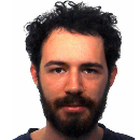
Stefano Diomedi
Research fellow
I have always been fascinated by how mathematical formalism can be used to simply understand and describe very complex phenomena. For this reason, after my master’s degree in mathematics, I decided to exploit my formation to study the most complex structure in the world: the brain.
At the bases of my research activity there are two question: how do neurons encode information and generate behaviour? Can be exploit this knowledge to develop biomedical applications?
Recently I tried to answer these locally in V6A, an area of posterior parietal cortex. This is a visuomotor area modulated by a plethora of different factors: visual and somatic stimuli, arm movement, gaze position ecc.
Testing simultaneously the contribution of several parameters, I found that this area is characterized by a ‘’mixed selectivity’’ i.e. , just a minority of cells is strongly modulated by a specific factor, while most cells code for combinations of different features. From an applicational point of view, I showed the possibility to extract in an unsupervised way, different neural states corresponding to different phases during an arm movement and thus the possibility to use this information to drive a discrete Brain Machine Interface.
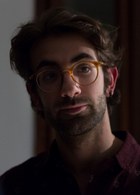
Francesco Edoardo Vaccari
Junior Assistant Professor
I am fascinated in brain in general since it is only organ that study itself. Its complexity emerges from billions of the simplest computations just, in the final analysis, to produce a motor behaviour that allows us to interact with the environment, survive and reproduce. Although the purpose of the brain is trivial to understand, how it produces behaviour is not so straightforward. For this reason, I focus my studies on how associative areas integrate multiple inputs to control and participate in the production of a coherent motor behaviour. Both single cell and population levels are necessary to approach these issues since they provide complementary information about the underlying neural activity. We recently found that in macaque medial parietal cortex the information is distributed in a network of neurons and showed the virtual absence of units strictly selective for only feature.
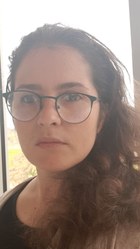
Elena Aggius Vella, PhD
Research Fellow
I have always been fascinated by the ability of our brain to develop knowledge, skills, concepts and to actively act on them. One of these concepts is space. At the beginning of my PhD at the Italian Institute of technology (IIT), I started to explore what is the space for the brain, I was particularly interested in the role of the body in building a representation of the surrounding space. Indeed, the movement, and the sensory organization of the body, leads to create several different representations of the space around our body. During my postdoc, I used fMRI methods to investigate the neural networks underlying egocentric navigation in sighted and congenitally blind subjects. Particularly, I investigated the role of area V6, a visual area retinotopically organized area, during navigation tasks in people without visual experience. In parallel, I am investigating the cinematic and neural correlates (fNIRS) subtending different actions. Regarding that, I am particularly interested in the interplay between planning and executing different actions. I am using machine learning analysis to create models to predict actions output.

Michele Testa
PhD Student
“Learning about the brain is just the brain trying to understand itself”.
There’s a theory that throughout our lifetime, we will fall in love three times, at three different stages of our lives. I fell in love for the first time when I was 10, when my dad bought a microscope for my birthday. Since that precise moment, I understood that science was my way. In 2015 I fell in love for the second time. During a conference held by the Nobel Prize Edvard Moser, I felt butterflies in my stomach. I was so interested in all the things related to the brain world that, in the following years, I decided to enroll in an International Master’s Degree in Neuroscience.
The visual system and how it works is extremely fascinating and how the visual information is encoded and translated in the brain is challenging. Moreover, this huge amount of signals are fundamental in order to interact with the external environment. This is why I focus my attention onto parieto-occipital areas involved in the mechanism of reaching and grasping, in particular on areas laying in the parieto-occipital sulcus (POs). I’m performing cytoarchitectonic analysis onto the V6 and V6A areas, trying to define the exact borders and the correct extensions of these regions, in relation with the nearby areas of the cortex.
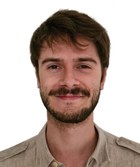
Riccardo Brandolani
PhD Student
I'm convinced that there is no environment more interesting, challenging and fulfilling than that of research. I am also convinced that neurophysiology is the subject that I have been most passionate about ever since I could develop the concept of interest. At this point it was an easy choice for me to combine these two ideas of mine by trying to pursue a PhD in neuroscience.
As a PhD student, I got to know the basics of transcranial magnetic stimulation (TMS), a noninvasive and painless brain stimulation technique. I have mainly approached it by using it to temporarily disrupt the properties of a specific area of interest (in the case of my research experience I worked in posterior parietal cortex). This "dynamic perturbation" approach makes it possible to causally correlate the stimulated area with specific actions performed by the stimulated subject, also having the ability to obtain temporal information. In the future, I would like to have the opportunity to study and learn different protocols and uses of TMS in order to hone my skills and deepen the enormous inherent potential of this technique.

Martina Gori
PhD Student
I enjoy organizing and connecting information, and what better way to apply this passion than by analyzing extensive neural data from interconnected brain areas?
With the increasing volume of neural data acquired through electrophysiological multi-array recordings, it is crucial to develop methods for analyzing neural populations to understand how different areas function as a network.
Motivated by a deep curiosity to unravel the intricate computations performed by the parieto-frontal network at the neuron population level, I decided to pursue a Ph.D. in Neuroscience after completing my Master’s Degree in Bioinformatics.
My goal is to gain a deeper understanding of how fronto-parietal areas communicate and whether these functional connections vary during naturalistic movements. The fronto-parietal network plays a fundamental role in voluntary movements, and by investigating its dynamics during such movements, I aim to contribute to the advancement of our knowledge about the brain.